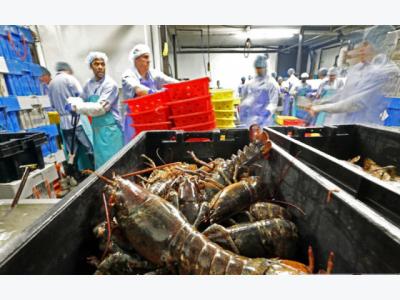Canada trade mission highlights need for food safety in Vietnam

Lawrence MacAulay, minister of the Canadian Agriculture and Agri-Food agency, recently concluded a 2-week trade mission he led to Vietnam and India aimed at strengthening and expanding trade relationships in the Asia-Pacific region.
During the mission, MacAulay met with his Vietnamese and Indian counterparts as well as industry representatives to discuss topics of common interest, expand new opportunities in key Asian markets, and strengthen overall bilateral, trilateral and multilateral ties.
He was accompanied by a group of Canadian industry associations representing a variety of agriculture, agri-food and seafood segments to demonstrate the effort of his government to strengthen commercial trade in the Asia-Pacific region.
“The Government of Canada firmly believes in the importance of trade, and the Asia-Pacific region is a priority market,” said MacAulay prior to embarking on the mission.
“By strengthening our global trade partnerships, the government aims to expand market access and identify export opportunities across the world, helping make our farmers more competitive at home and abroad, while growing our middle class.”
Figures from the Asia Pacific Foundation of Canada showed the following overall exports from Vietnam to Canada for the past four years – 2013 (US$1.61 billion); 2014 (US$2.12 billion); 2015 (US$2.27 billion) and 2016 (US$2.72 billion).
The latest year for which a detailed breakdown was available was 2015 and it showed the major groupings of exports were – electrical machinery and equipment (25.26%); knitted or crocheted apparel (10.70%); footwear (10.57%); woven clothing and apparel articles (9.98%); boilers and mechanical devices, etc. (8.42%); and furniture and stuffed furnishings (8.11%).
Meanwhile, imports into Vietnam from Canada per the Foundation statistics for the same period were – 2013 (US$310.82 million); 2014 (US$342.11 million); 2015 (US$372.66 million) and 2016 (US$290.13 million).
The primary classifications of imports as a percentage of the total included fish, crustaceans and molluscs (16.03%); cereals (13.97%); fertilizers (12.32%); and oils seeds and miscellaneous fruit and grain (10.63%)
During his visit, MacAulay and members of his mission discussed a broad array of measures aimed at bolstering trade— but one theme kept being brought up time and time again in the numerous talks.
That being there is great opportunity for expanded exports of Vietnamese agriculture provided farmers, processors and exporters can get their act together and improve the quality and food safety of their products.
Vietnam has many agricultural products such as coffee and seafood that could expansively be shipped to Canada but the products can’t currently pass the strict food safety standards set by the Canadian government.
Per official Canadian statistics exports of – coffee not roasted and not decaffeinated – for the last years that information was available were only US$10.5 million for 2013, US$14.25 million for 2014 and US$12.75 million for 2015.
The reason these numbers are so unbelievable low is that Vietnamese coffee cannot comply with and pass the strict standards enforced by the Canadian government.
Secondly, blueberries and other fruit were another item specifically mentioned as an agricultural product that Canada would like to boost imports from Vietnam. But here again, the fruit cannot pass the Canadian food safety requirements.
Fresh fruit imports per Canadian statistics from Vietnam were only US$4.5 million in 2013, US$4.9 million in 2014 and US$5.25 million in 2015. Here again these paltry numbers are due to the failure of Vietnam agriculture to adhere to strict food safety requirements.
One of the bright spots during the trade mission of MacAulay was the announcement that soon, Canada will sponsor and fund a US$12 million project in Vietnam entitled ‘Safety for Food Growth.’
Có thể bạn quan tâm
 Việt Nam slams Australia’s prawn ban
Việt Nam slams Australia’s prawn ban The Vietnamese Government has accused Australia of "causing serious damage" to its prawn farmers and exporters and has asked the Federal Government to reconside
 Fishermen seeking work abroad scammed
Fishermen seeking work abroad scammed Phạm Thị Cúc, who lives in Hải Ninh Commune in the central province of Quảng Bình’s Quảng Ninh District, had hoped that her life could change if her husband
 Viet Nam seafood exports: Endless obstacles
Viet Nam seafood exports: Endless obstacles Spanish commercial television channel Cuatro broadcast inaccurate and subjective information (polluted, dirty, heavy metals, environmental pollution) on Vietnam